Maya Murals: Stunning Images of King & Calendar
Maya Artwork
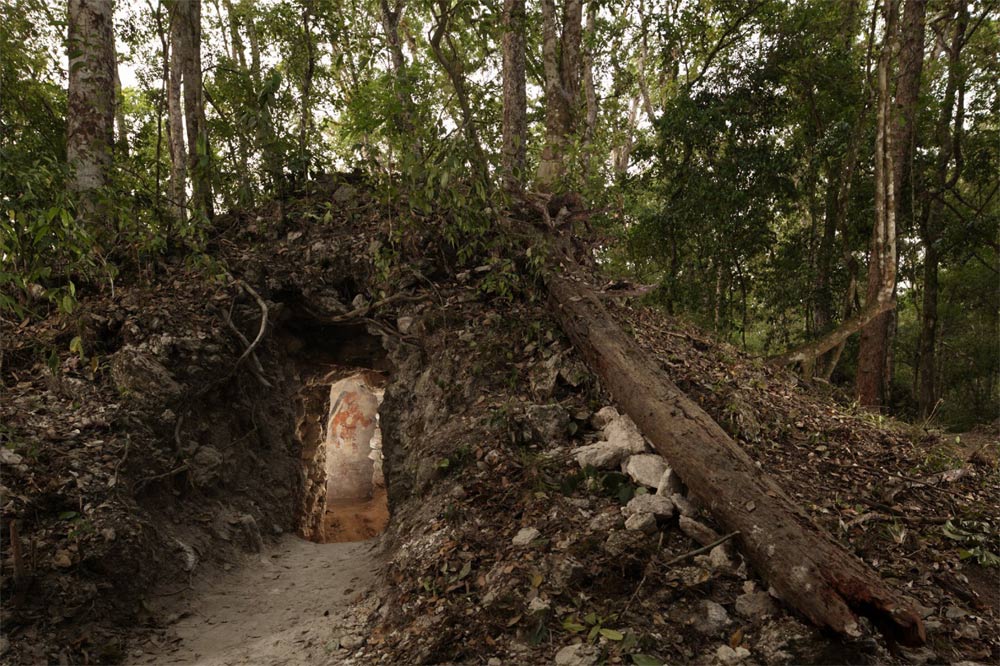
The painted figure of a man, possibly a scribe who once lived in the house built by the ancient Maya, is illuminated through a doorway to the dwelling, in northeastern Guatemala. The structure represents the first Maya house found to contain artwork on its walls. The research, detailed in the May 11 issue of the journal Science, is supported by the National Geographic Society.
Decorated Walls
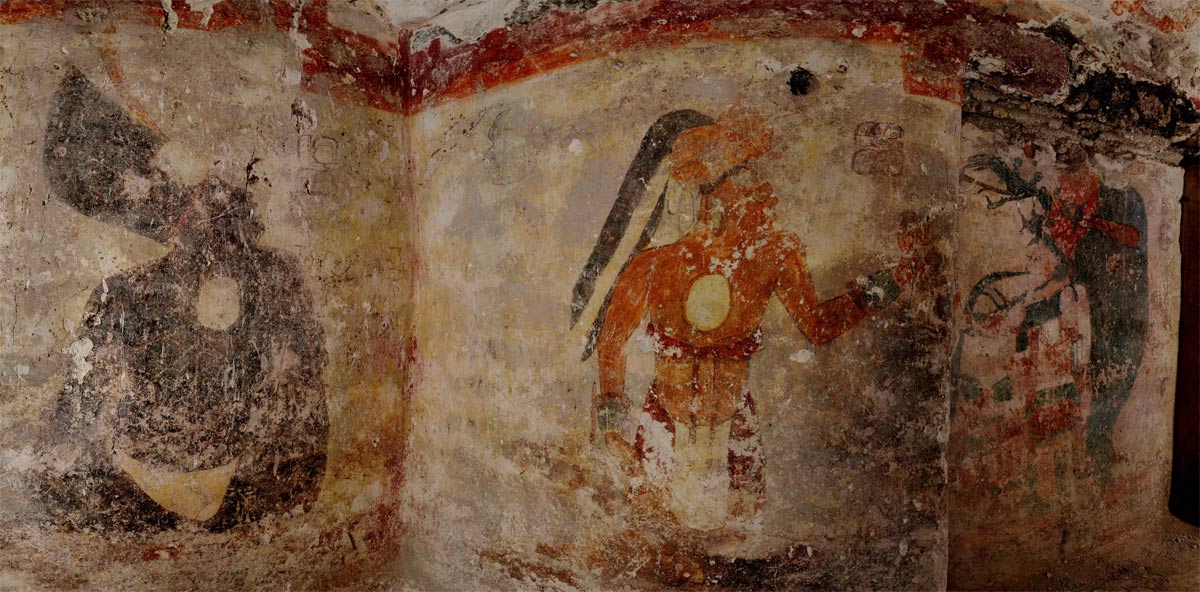
The first artwork to be found on walls of a Maya house adorn the dwelling in the ruined city of Xultún. The figure at left is one of three men on the house's west wall who are painted in black and wear identical costumes.
Tow Scribe
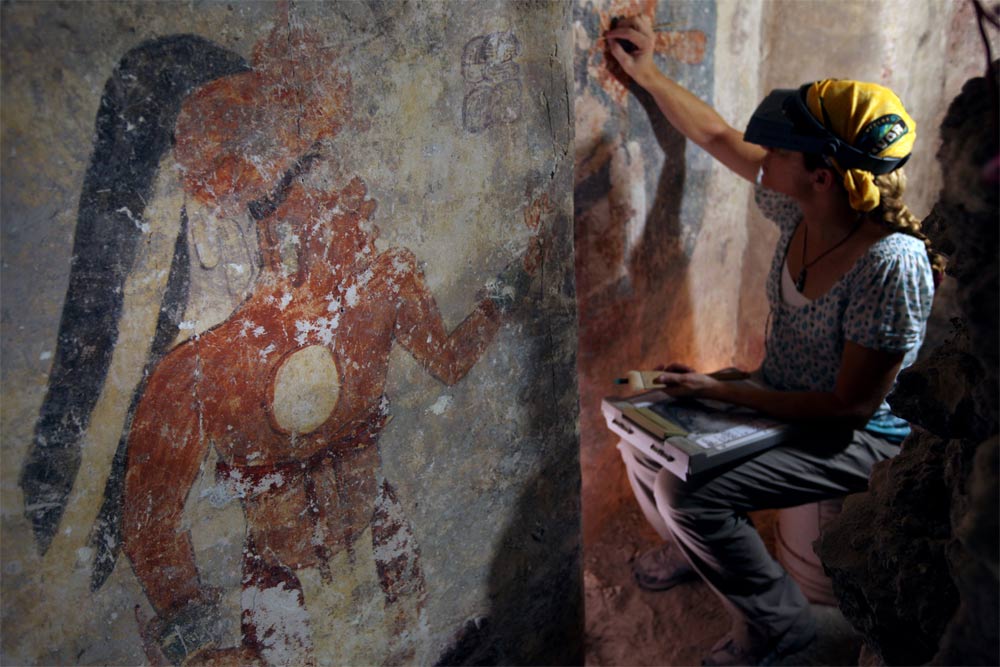
Conservator Angelyn Bass cleans and stabilizes the surface of a wall of a Maya house that dates to the ninth century. The figure of a man who may have been the town scribe appears on the wall to her left.
Tree House?
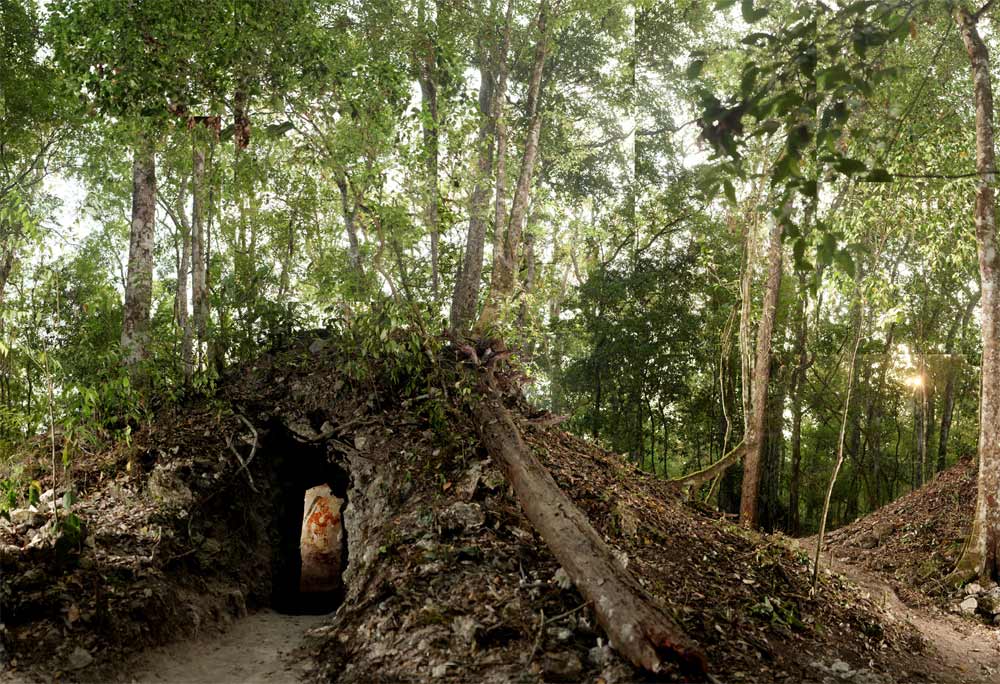
Trees grow atop a newly discovered mound over a house built by the ancient Maya that contains the rendering of an ancient figure, possibly the town scribe. The house sits at the edge of the ancient site of Xultún in Guatemala, a city that once housed tens of thousands of people.
Astronomical Cycles
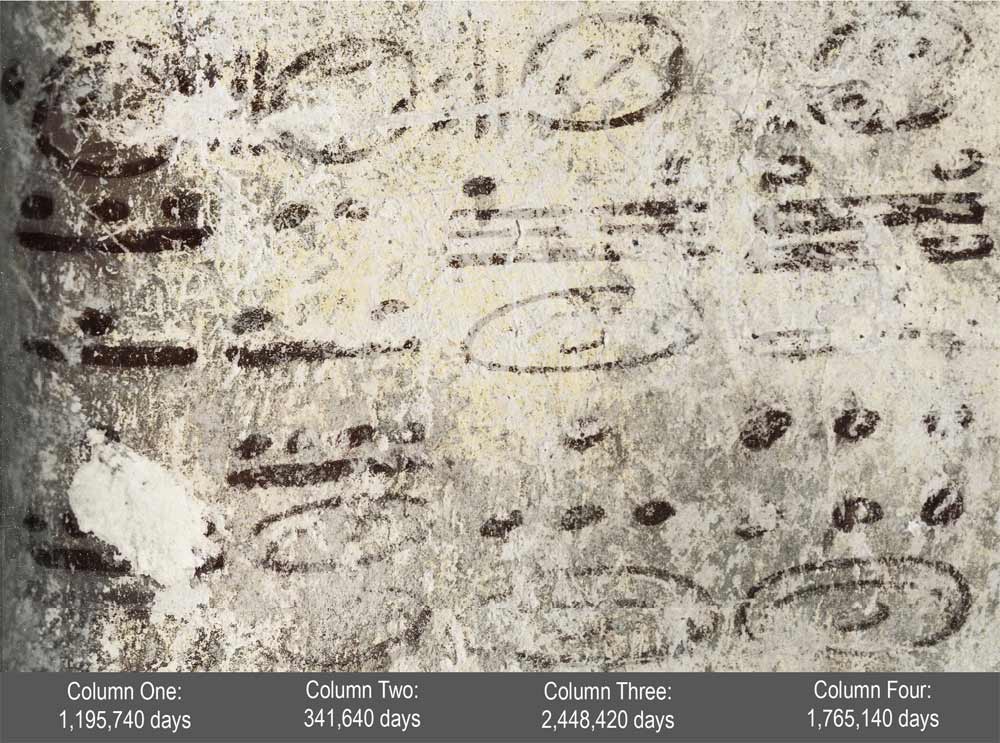
Four long numbers on the north wall of the ruined house relate to the Maya calendar and computations about the moon, sun and possibly Venus and Mars; the dates stretch some 7,000 years into the future. These are the first calculations Maya archaeologists have found that seem to tabulate all of these cycles in this way. Although they all involve common multiples of key calendrical and astronomical cycles, the exact significance of these particular spans of time is not known.
The Archeologist and the Scribe
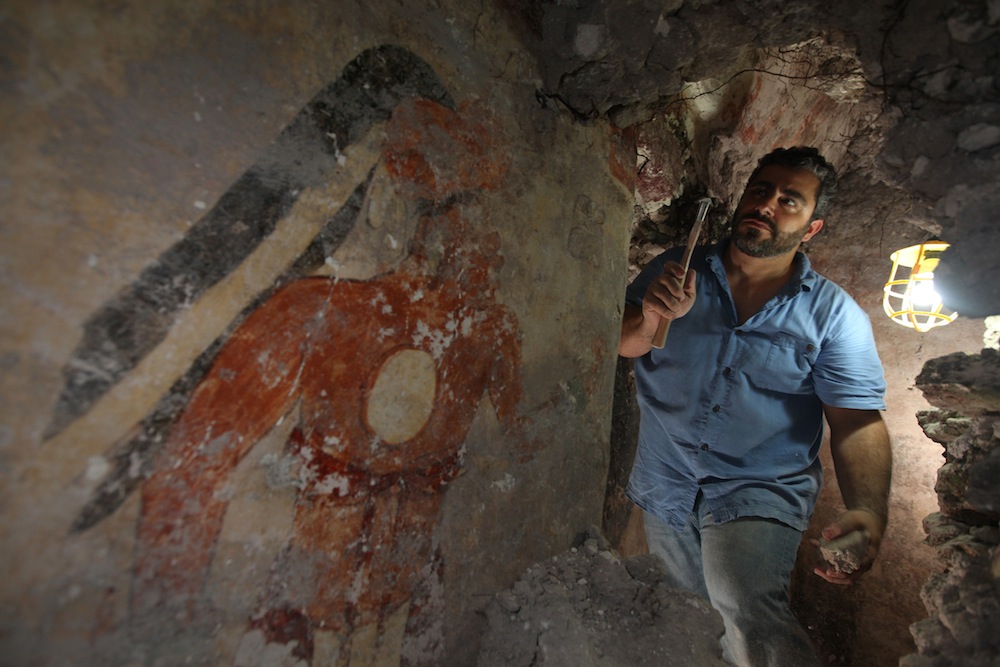
“Younger Brother Obsidian,” as labeled on the north wall of the Maya city’s house by an unknown hand, was painted in the 9th century A.D. Archaeologist William Saturno of Boston University excavates the house in the ruins of the Maya city of Xultún. Younger Brother Obsidian may have been the town scribe. Excavation and preservation of the site were supported by the National Geographic Society.
Excavating a Mayan Calendar
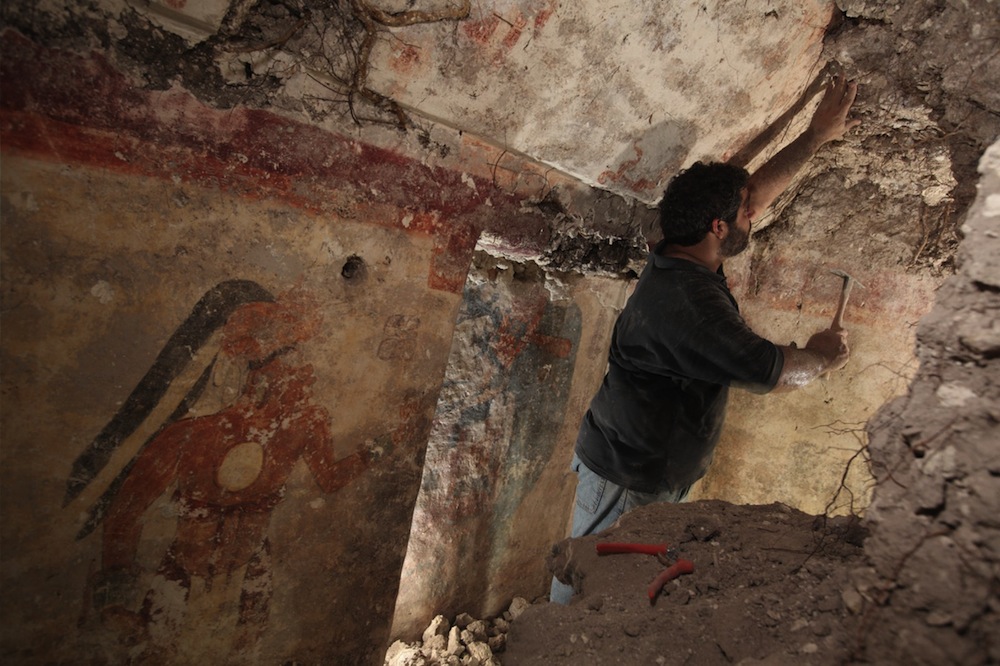
Archaeologist William Saturno of Boston University carefully uncovers art and writings left by the Maya some 1,200 years ago. The art and other symbols on the walls may have been records kept by a scribe, Saturno theorizes.
Sign up for the Live Science daily newsletter now
Get the world’s most fascinating discoveries delivered straight to your inbox.
Younger Brother Obsidian
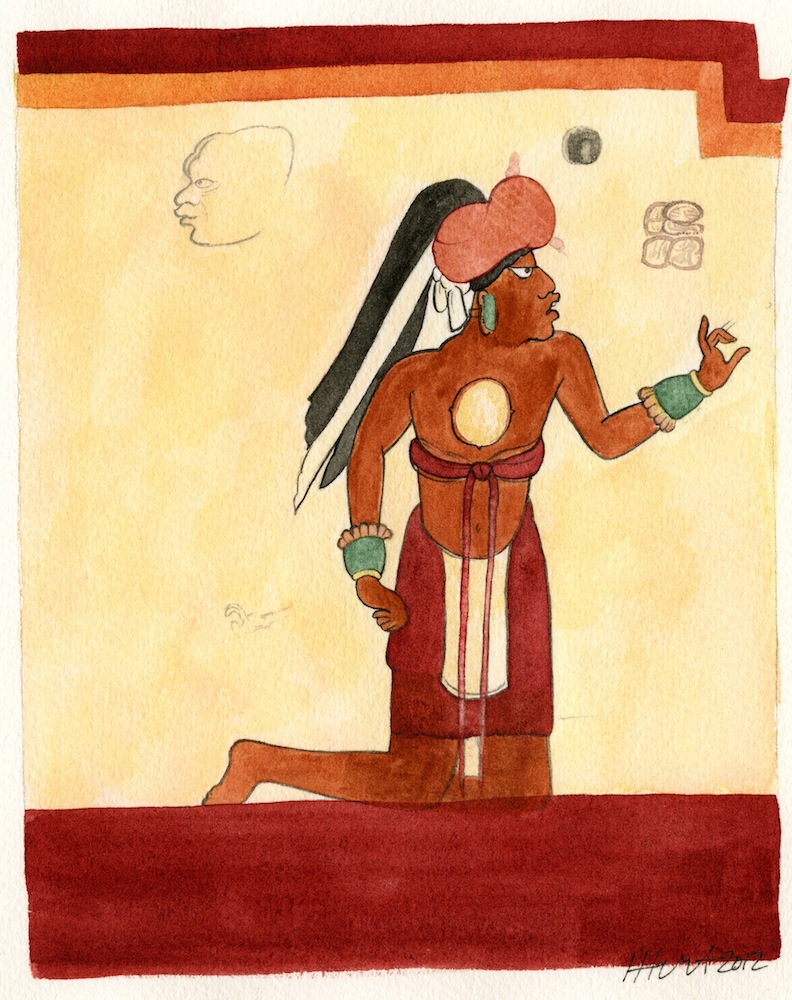
A vibrant orange figure, kneeling in front of the king on the ruined house’s north wall, is labeled “Younger Brother Obsidian,” a curious title seldom seen in Maya text. The man is holding a writing instrument, which may indicate he was a scribe. The painting recreates the design and colors of the figure in the original Maya mural.
Mayan King
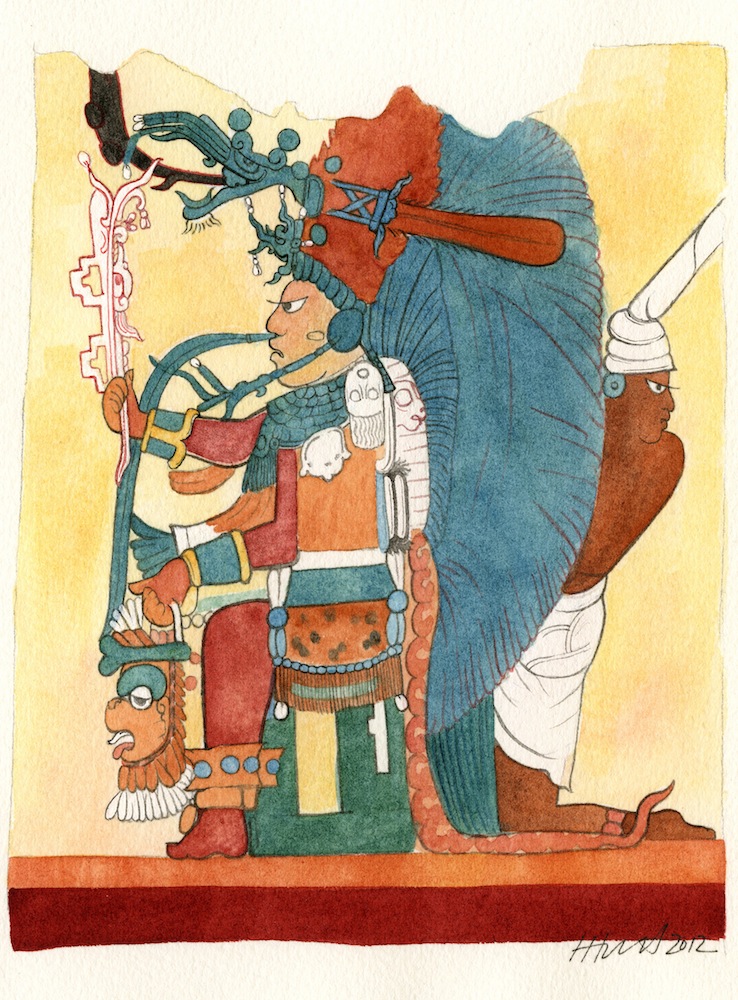
A Maya king, seated and wearing an elaborate head dress of blue feathers, adorns the north wall of the ruined house discovered at the Maya site of Xultún. An attendant, at right, leans out from behind the king’s head dress. The painting by artist Heather Hurst recreates the design and colors of the original Maya artwork at the site.
Three Painted Men
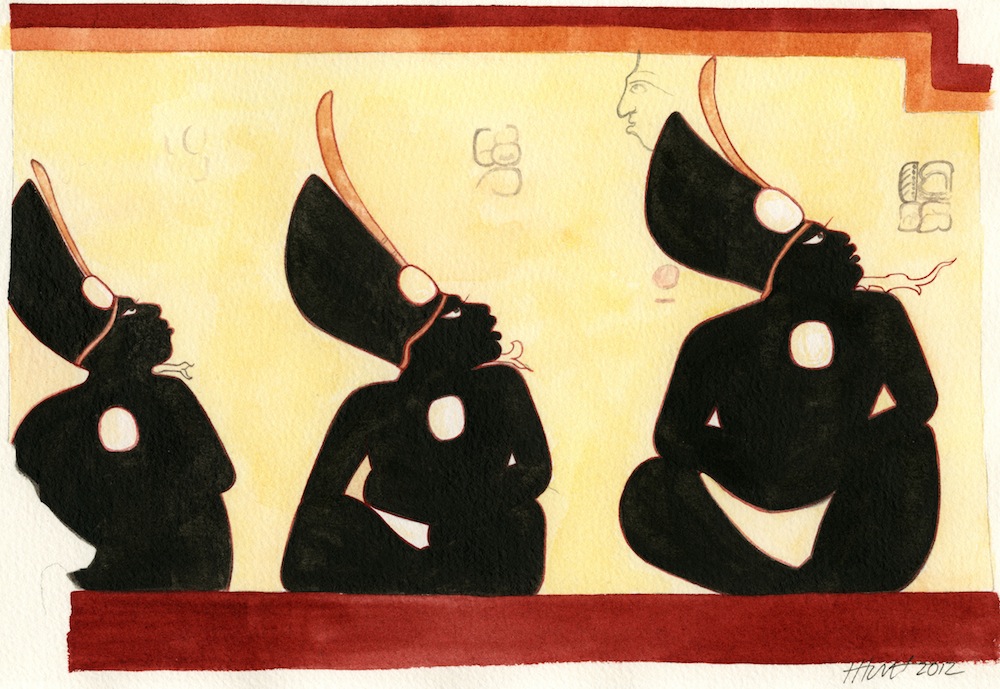
Three male figures, seated and painted in black. The men, wearing only white loincloths and medallions around their necks and a head dress bearing another medallion and a single feather, were uncovered on the ruined house’s west wall. The painting recreates the design and colors of the original Maya mural. Excavation and preservation of the site were supported by the National Geographic Society.










